If you care about your oral hygiene, dental water floss can be a great option for you. A standard flossing apparatus is an instrument used to cleanse the teeth, and water flossing instruments are an update to that. Whether it’s Waterpik or some other product, it is suggested for you to use your flossing instrument consistently for better oral health. And, if you want your flossing device to sustain for longer, we suggest you cleanse your flosser regularly.
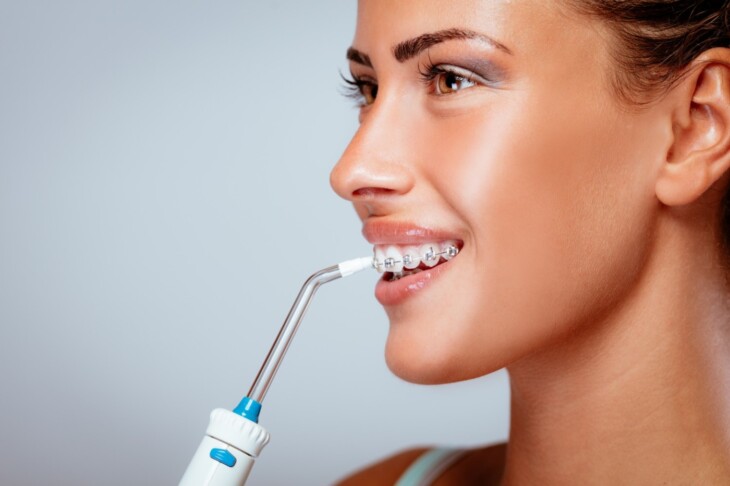
Source: Shaw Orthodontics
How should a Waterpik flosser be thoroughly cleaned?
As a Waterpik Water Flosser consumer, you might believe it to be just another product that does not need proper maintenance. When the water flossing apparatus is in good condition, it effectively helps you in cleaning your mouth and maintaining good oral health. However, due to continuous use, it tends to wear out. Build up of various bacterias, and other microorganisms slow down the functioning of flossing instruments. Hence, it would be much better if you clean the Waterpik flossing instrument on a regular basis to maintain its efficiency.
You can choose to clean your water flosser on a weekly or monthly basis. The Light Cleaning method requires lesser time as compared to the Deep Cleaning method, which requires additional time and instruments. A weekly light cleaning and a monthly in-depth cleaning are preferred. Check here to know about the best Waterpik flossers while we give you a rundown of the appropriate steps to be taken for water flosser cleaning.
Weekly Method
Since you floss daily, it is prudent to cleanse it once every seven days. This cleaning strategy is straightforward and could be done in almost no time. You can follow this procedure any day after the completion of the flossing process. Below is the ideal approach to sustain the quality of your Waterpik Water Flosser for a long time.
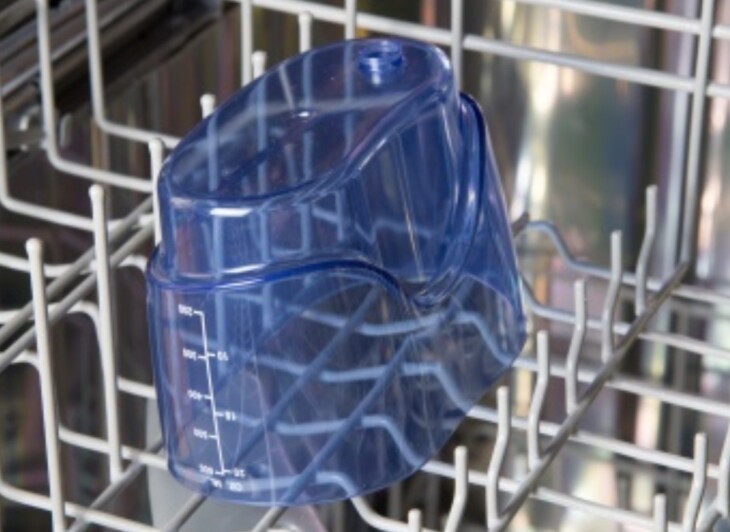
Source: Pinterest
1. Empty out the Water Repository and the Water Pipe of any water
When you are done with water flossing, it is inevitable for some water to remain in the repository. It is ideal for clearing the repository regularly by throwing away the wastewater and filling new water inside it before every use. Alongside this, you should also take care of the water link that aids the water in reaching the flosser’s tip.
To empty the excess water level in the repository, you can switch on the flosser and let the water stream out. Soon after, the water would be emptied out with no excess water left inside the waterline. From that point onwards, it is ideal for running the flossing instrument for a few seconds to siphon the air via the cylinder and get rid of the excess dampness.
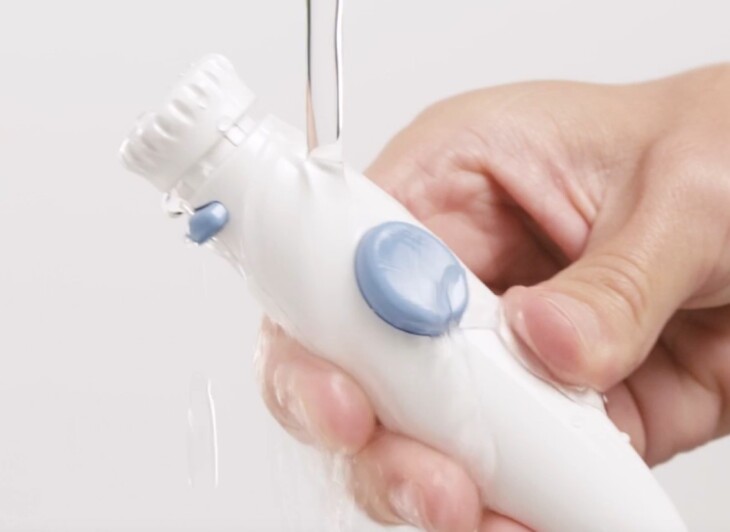
Source: Youtube
2. Clean the outer body of the flosser
Now that the repository is finally empty, you can focus on cleaning the outer body of the flosser. The Water flosser being used by you might contain a build-up of grime and sogginess. Thus, it is considered ideal for wiping the outer surface with a damp cloth or sponge.
Cleaning the hose and the whole outer body of your water flosser is an added plus. While cleaning the internal area, you can wipe it with a fabric that is not dripping wet but just damp enough to wipe everything clean. It would be best if you use delicate cleaning equipment or fabric, which gives impressive cleansing without harming the flosser.
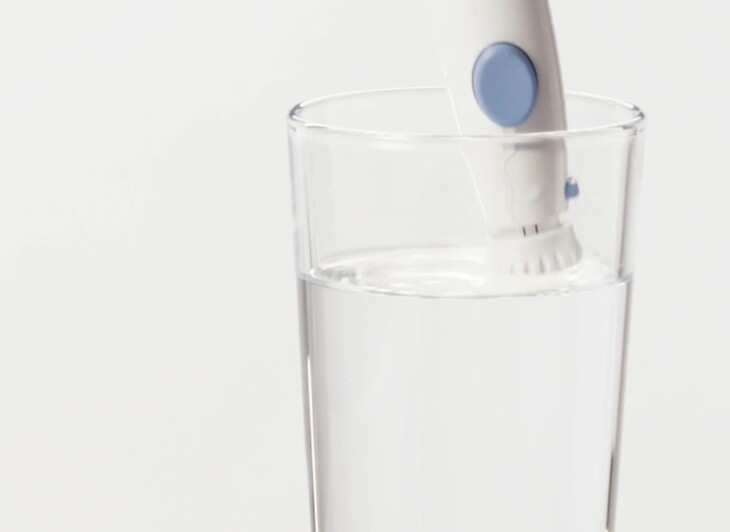
Source: Youtube
3. Wait till the flosser has dried
While clearing the repository and cleaning the water flosser’s body, it is a good choice to wait for certain hours. The flossing instrument can dry naturally when it is exposed to air, so you should keep it somewhere where it can have ample access to fresh and dry air.
You should open the flosser to the airy atmosphere to allow it to remain dry. This will reduce the chances of bacteria, fungus, and other organisms from developing in your flossing instrument.
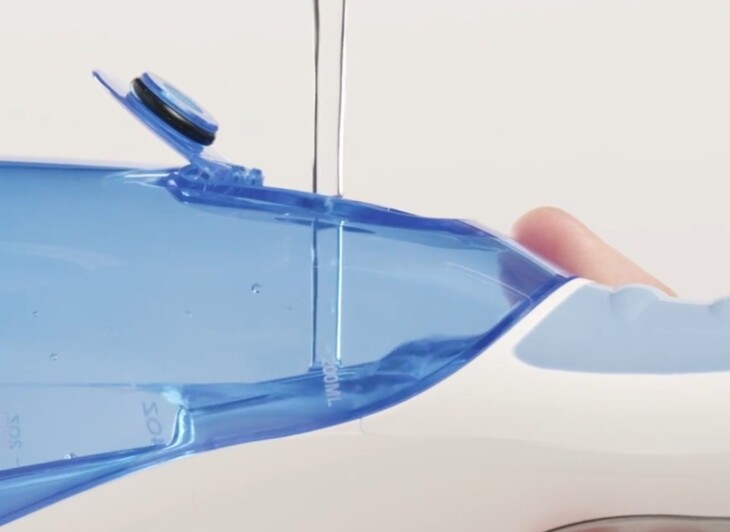
Source: Youtube
Monthly Method
Below are ways in which you can deep-clean your water flosser on a monthly basis.
1. Cleaning the internal parts thoroughly
As the internal parts are often left untouched, they are bound to collect dust and deposits in the form of debris. Thus it becomes of utmost importance to clean the internal parts of the flosser, including the pipes, pumps, and filters. These parts should be cleaned on a monthly basis along with the water tank.
Some of the products that you can use to clean a water flosser’s internal parts are diluted acetic acids like white vinegar, lukewarm water, and mouthwash. You can fill the water flosser’s tank with lukewarm water mixed with a bit of vinegar or any antibacterial mouthwash and then run the flosser to clean it out.
When the flosser is half empty, you can let it lay around for an hour or so till the dirt accumulates in the water and then let the flosser run further to empty it out. You can later fill the flosser with clean water and run it to give it a good rinse post-cleaning.
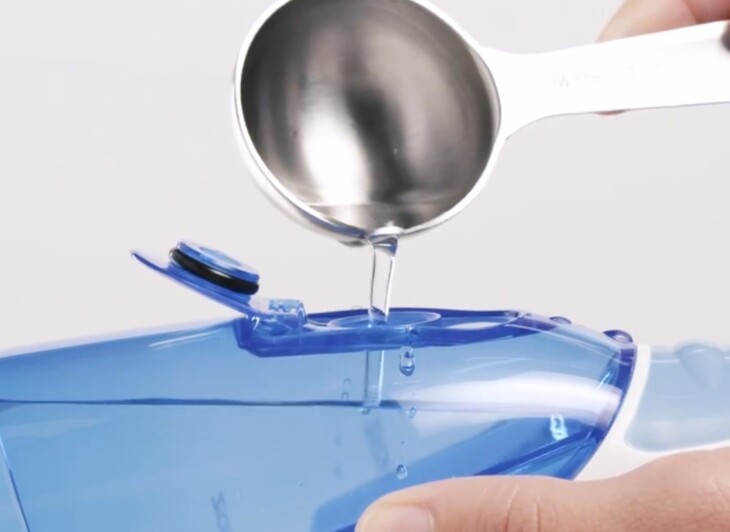
Source: Youtube
2. Cleaning the tip of the flosser
For cleansing the tip, you should take it off from the body of the flossing instrument. You can then dip the tip of the flosser into a bowl filled with diluted acetic acid or white vinegar. You can let it rest in the vinegar for five to ten minutes. After this, take out the flosser tip and run it under lukewarm water to clean it.
It is advisable to replace your flosser’s tip every three to four months while also cleaning it with vinegar once every month to get rid of excess debris and bacteria.
The Benefits
Whether we talk of a flossing instrument or a brush, it is always advisable to clean it consistently. There are numerous advantages of cleaning the water flossing instrument, and these are as follows:
- It gets rid of the mineral stores that have been outlined in the Water Flossing instrument.
- It retains the Water Flossing instrument in good condition.
- It expands the existence of the flosser, which means that cleansing it regularly makes it durable.
Wrapping it all up
Assuming you have a Countertop Water Flosser, you ought to make sure to unplug the power line before you start the cleaning cycle. If you need to run the flosser to clean the water tube and flosser tip, do so first and then unplug the force line before following the further steps. A water flosser is important, and cleaning it regularly ought to help you maintain better oral hygiene.
